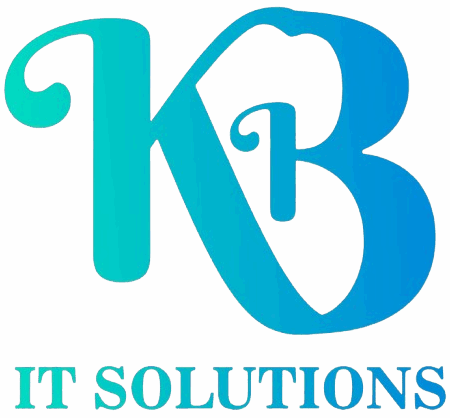Introduction to Search Engine Marketing (SEM)
What is Search Engine Marketing?
- Definition of SEM and its role in digital marketing
- Difference between SEM and SEO (Search Engine Optimization)
- Paid search advertising vs. organic search results
- Understanding the search engine landscape: Google, Bing, Yahoo, and others
Importance of SEM in Digital Marketing
- Immediate visibility and traffic generation
- Budget control with PPC (Pay-Per-Click) ads
- SEM as a cost-effective way to acquire leads and sales
- Understanding the competition and keyword landscape
Basics of SEM Campaigns
Understanding Paid Search Campaigns
- Key components of a paid search campaign: Ads, Keywords, Bidding, Budget
- Types of SEM campaigns: Text ads, Shopping ads, Display Network, and Video ads
- Overview of Google Ads (formerly Google AdWords), Bing Ads, and other platforms
Understanding Search Engine Results Pages (SERPs)
- What are SERPs and how they impact SEM campaigns
- Differences between paid search results and organic search results
- How paid ads appear on SERPs: Search ads vs. Google Shopping ads vs. Local ads
Keyword Research for SEM
The Importance of Keywords in SEM
- How keywords drive paid search campaigns
- Types of keywords: Short-tail vs. long-tail keywords
- Understanding search intent and its relevance to SEM
Tools for Keyword Research
- Google Keyword Planner
- SEMrush, Ahrefs, Moz, and other keyword research tools
- Identifying high-traffic and low-competition keywords
Keyword Selection and Grouping
- Selecting the right keywords for your business
- Grouping keywords into themes or ad groups for better targeting
- Negative keywords: Importance and usage in SEM
Creating Effective SEM Ads
Ad Copywriting for SEM
- Crafting compelling ad headlines and descriptions
- Including keywords in ad copy for relevance and quality score
- Using calls-to-action (CTAs) that drive conversions
Ad Extensions
- What are ad extensions and why they are important?
- Types of ad extensions: Sitelinks, Callouts, Call extensions, Location extensions, etc.
- How ad extensions improve the visibility and performance of your ads
Quality Score in SEM
- Understanding Google’s Quality Score: Factors that affect it
- Improving Quality Score: Ad relevance, landing page experience, CTR
- How Quality Score affects ad rank and cost-per-click (CPC)
SEM Bidding and Budgeting
Bidding Strategies in SEM
- Understanding Cost-per-Click (CPC) bidding and other bidding options (CPM, CPA)
- Manual vs. automated bidding: Advantages and disadvantages
- Setting bids based on keyword competition and goals
Setting Campaign Budgets
- How to allocate your budget for maximum ROI
- Budgeting for daily, weekly, and monthly campaigns
- Adjusting budget based on performance and seasonality
Bid Adjustments
- Understanding bid adjustments for location, device, time of day, etc.
- How to set bid adjustments for more control over your campaign’s performance
Setting Up SEM Campaigns
Google Ads Campaign Structure
- Campaigns, Ad Groups, and Ads: Understanding the hierarchy
- Creating your first campaign: Step-by-step process
- Selecting campaign objectives: Sales, Leads, Website traffic, etc.
- Geo-targeting and device targeting for better reach
Creating Landing Pages for SEM Campaigns
- Importance of a high-converting landing page in SEM
- Designing landing pages that align with ad copy
- Using A/B testing to optimize landing pages for better conversions
Tracking and Analytics
- Setting up Google Analytics and Google Ads conversion tracking
- Implementing Google Tag Manager for more precise tracking
- How to track and measure performance (CTR, CPC, Conversion Rate, ROI)
Monitoring and Optimizing SEM Campaigns
Monitoring SEM Campaign Performance
- Key metrics to track: Impressions, Clicks, Conversions, Quality Score, and ROAS
- Understanding CTR (Click-Through Rate) and how to improve it
- Analyzing cost per acquisition (CPA) and return on ad spend (ROAS)
Optimization Techniques
- Continuous keyword optimization: Adding, pausing, and refining keywords
- Improving ad copy and design based on performance
- Refining bidding strategies and adjusting budgets for optimal performance
A/B Testing in SEM
- Importance of A/B testing in SEM campaigns
- How to test different ad variations: Headlines, CTAs, and ad extensions
- Analyzing test results and making data-driven decisions
Advanced SEM Techniques
Remarketing in SEM
- What is remarketing and how it works in SEM
- Setting up remarketing campaigns in Google Ads
- Using dynamic remarketing to show personalized ads
Targeting and Audience Segmentation
- Demographic targeting: Age, gender, income, interests
- Device targeting and its impact on SEM campaigns
- In-market audiences vs. affinity audiences
Automated Rules and Scripts
- How to use automated rules for bidding, budgets, and pausing campaigns
- Setting up Google Ads scripts to automate tasks like adjusting bids or pausing non-performing ads
Smart Campaigns and Machine Learning
- Leveraging Google’s machine learning for automated campaign management
- Understanding Smart Bidding strategies: Target CPA, Target ROAS, Maximize Conversions, etc.
- Benefits and risks of automated campaign management
SEM Analytics and Reporting
SEM Reporting Tools
- Using Google Ads reporting features to track performance
- Custom reports and dashboards in Google Ads and Analytics
- Third-party SEM reporting tools: SEMrush, WordStream, etc.
Interpreting SEM Data
- Understanding campaign metrics: Impressions, CTR, CPC, Conversion Rate
- Identifying trends in campaign performance and making adjustments
- Reporting SEM results to stakeholders and clients
Advanced SEM Analytics
- Attribution models in SEM: Last-click, first-click, linear, time decay, etc.
- Setting up custom attribution models in Google Ads and Analytics
- Multi-channel attribution: Analyzing how SEM interacts with other channels
Legal and Ethical Considerations in SEM
Ad Policies and Guidelines
- Understanding Google Ads and Bing Ads policies
- Prohibited content and practices in SEM (e.g., false claims, restricted industries)
- How to stay compliant with advertising standards and policies
Privacy Considerations in SEM
- Collecting and storing customer data in compliance with privacy laws (e.g., GDPR, CCPA)
- Protecting user privacy in remarketing and targeting
- Disclosure requirements for certain types of ads (e.g., political ads)
SEM for Different Business Models
B2C SEM
- Best practices for Business-to-Consumer SEM campaigns
- Creating engaging ads that drive consumer purchases
- Seasonal campaigns and promotions in B2C SEM
B2B SEM
- Tailoring SEM campaigns for Business-to-Business marketing
- Focusing on lead generation and form submissions
- Creating content-rich ads that appeal to decision-makers
E-commerce SEM
- SEM strategies for online stores and e-commerce websites
- Google Shopping campaigns: Setting up and optimizing product listings
- Product listing ads (PLAs) and their role in e-commerce SEM


